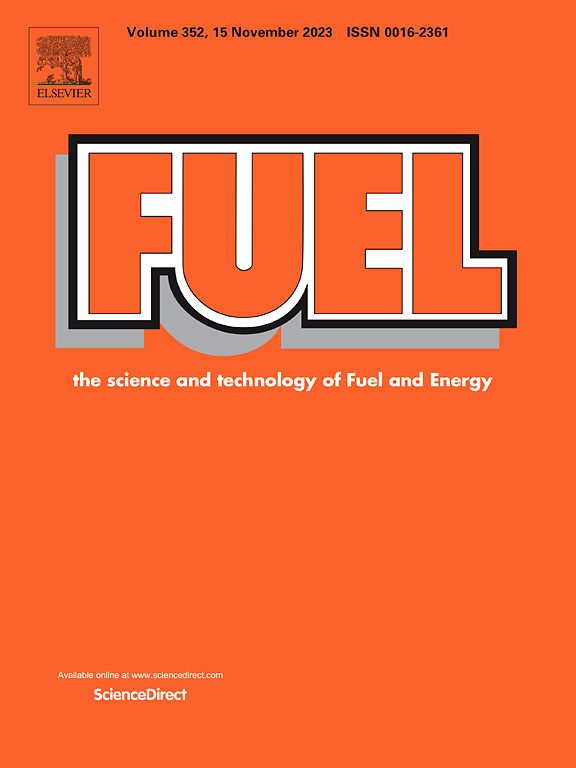废碎玄武岩纤维作为高性能沥青混合料改性剂:基于纤维特性参数的多温域性能表征
IF 7.5
1区 工程技术
Q2 ENERGY & FUELS
引用次数: 0
摘要
本研究系统探讨了不同特征参数(长度:3、6、12 mm;直径:7、16、25 μm)对沥青混合料(AM)在高、中、低温领域性能的影响。主要目的是建立玄武岩纤维增强沥青混合料(BFAM)的多温性能与WCBF的特征性能(长度和直径)之间的定量关系,从而优化纤维的特征参数,实现可持续的路面应用。采用单轴动态蠕变试验、直接拉伸循环疲劳试验和热应力约束试样试验来评价高温变形抗力、中温疲劳性能和低温抗裂性能。采用动模量分析和等截面理论进一步阐明了协同作用机理。结果表明,沥青混合料在不同温度域的特性参数对沥青混合料的影响是一致的。当纤维直径一定时,随着纤维长度的增加,BFAM的性能呈现先增加后降低的趋势。相反,当纤维长度固定时,随着纤维直径的增加,性能会下降。当与BF-6-7混合时,沥青混合料在所有温度域都具有最佳性能。纤维的特性参数直接影响比表面积调节的单丝分散和界面粘附、应力传递空间网络的形成以及粘弹性组分的比例调节,是影响增材制造性能的主要因素。值得注意的是,较小的直径使截面惯性矩最大化,而中等长度则平衡了纤维-沥青的相互作用和缺陷最小化。通过改变废玄武岩纤维的特性参数,对废玄武岩纤维进行再利用,研究纤维特性参数对沥青混合料性能的改性作用及机理,为废玄武岩纤维的高效利用提供思路和技术参考。本文章由计算机程序翻译,如有差异,请以英文原文为准。

Waste-chopped basalt fiber as a high-performance asphalt mixture modifier: Multi-temperature domains performance characterization based on fiber characteristic parameters
This study systematically investigates the synergistic effects and mechanisms of waste-chopped basalt fiber (WCBF) with varying characteristic parameters (lengths: 3, 6, 12 mm; diameters: 7, 16, 25 μm) on asphalt mixture (AM) performance across high, medium and low-temperature domains. The primary objective is to establish a quantitative relationship between the characteristic properties (length and diameter) of WCBF and the multi-temperature performance of basalt fiber reinforced asphalt mixture (BFAM), thereby optimizing the fiber characteristic parameters to achieve sustainable pavement applications. Uniaxial dynamic creep tests, direct tensile cyclic fatigue tests, and thermal stress-restrained sample tests were employed to evaluate high-temperature deformation resistance, intermediate-temperature fatigue behavior, and low-temperature crack resistance. Dynamic modulus analysis and equal cross-section theory were further applied to elucidate the synergistic mechanisms. The results indicate that the characteristic parameters of WCBF consistently influence the asphalt mixture across diverse temperature domains. When the fiber diameter remains constant, the performance of BFAM exhibits an initial increase followed by a subsequent decrease with increasing fiber length. Conversely, when the fiber length is fixed, a decrease in performance is observed with an increase in fiber diameter. The optimal performance of the asphalt mixture when blended with BF-6-7 was observed across all temperature domains. The characteristic parameters of the fibers directly affect the monofilament dispersion and interfacial adhesion regulated by the specific surface area, the formation of the stress transfer spatial network, and the proportional regulation of the viscoelastic components, which are the main factors affecting the performance of AM. Notably, smaller diameters maximized the cross-sectional moment of inertia, while intermediate lengths balanced fiber-asphalt interactions and defect minimization. This paper reuses waste-chopped basalt fibers by changing their characteristic parameters, and the modification effect and mechanism of fiber characteristic parameters on the performance of asphalt mixtures were studied, providing ideas and technical references for the efficient utilization of WCBF.
求助全文
通过发布文献求助,成功后即可免费获取论文全文。
去求助
来源期刊

Fuel
工程技术-工程:化工
CiteScore
12.80
自引率
20.30%
发文量
3506
审稿时长
64 days
期刊介绍:
The exploration of energy sources remains a critical matter of study. For the past nine decades, fuel has consistently held the forefront in primary research efforts within the field of energy science. This area of investigation encompasses a wide range of subjects, with a particular emphasis on emerging concerns like environmental factors and pollution.
 求助内容:
求助内容: 应助结果提醒方式:
应助结果提醒方式:


